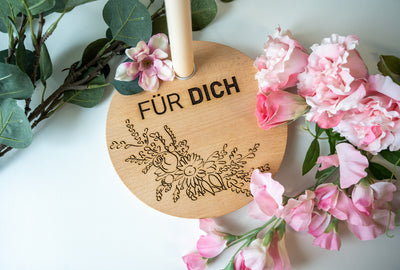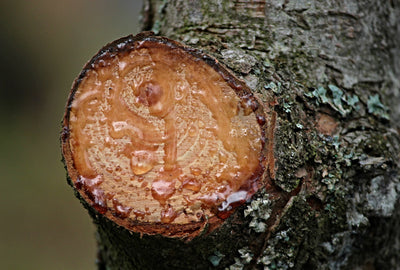What is concrete? Above all, one thing: omnipresent in your everyday life, because it is a load -bearing component of most houses. Wherever a new house is being built, concrete plays a crucial role for stability.
But this material can also play a decorative role in the garden, you will receive more inspiration at the end of this article. In any case, it is not a discovery of modern times: Even a good 2,000 years ago, the Romans used the so -called 'Opus Caementitium' for the establishment of numerous of their buildings that are still partly still standing today. As you will still see, this ancient predecessor today comes very close.
What is concrete? A definition
Basically it is With hardened concrete around an artificial stone, which consists of binders (mostly cement), different rock grooves such as gravel or sand as well as water. In contrast to previous pioneers, it is common today to add certain abdominal additives. In this way it is possible to ensure specific concrete properties, especially with a view to desirable stability. Concrete is therefore a mixture of different components, which can initially be thick (mushy) and formable after mixing.
Only after a few days hardens concrete, which gives stability and resilience from day to day. In the hardened state it is To a very hard building material which predestines him for house building. Incidentally, a cubic meter of fixed concrete reaches a proud weight of almost 2,500 kilograms. While water and binders like cement only make up a small part, sand and gravel make up the largest share, with about 13 out of 16 parts. It is important to know that a perfect mix ratio of all components is important for the properties.
What is concrete made of?
As has already become clear, consists of natural components: Rock grain like sand and gravel are the main component. Water and binders such as cement ensure that all components combine, and it has a very high compressive strength. Concrete is recognizable by the characteristic gray colour.
How is concrete made?

Even if the answer to the question 'What is concrete?' With water, cement and rock appears quite simple, modern, machine-produced concrete mixtures are now in a sophisticated high-tech product. In addition to the quality of all ingredients, the exact mixing ratio is mainly important. In the area of machine production of so -called transport concrete, only deviations of a maximum of 3 % are permitted. This complexity explains why, for larger construction projects, the concrete is usually delivered directly. This can be used quickly and in large quantities with a concrete mixer.
The manual merging comes at best For smaller construction projects In question, what is already available in the hardware store. As a rule, these only have to be mixed with the specified amount of water. For reasons of efficiency, you will see more and more on today's construction sites that already hardened concrete components are installed directly.
Who invented the concrete?
Basically the Old Romans are considered the idea of this groundbreaking invention. Already the mixtures in antiquity with various rocks and binders came very close to today's concrete variants. In any case, stability speaks for itself, because there are still numerous buildings from antiquity. The recent history of concrete production begins around the middle of the 19th century. Two Englishmen are considered important pioneers for concrete development among experts.
In 1824, the mason Joseph Aspdin burned lime and clay to cement for the first time. He did this on the southern English island of Portland. This procedure was so sustainable that Portland cement is still mentioned today. You may have heard of that! 20 years later, Isaac Charles Johnson was to be able to significantly improve the previous recipe. It used higher temperatures to the melting point of the fabrics, with a stone clinker available after cooling. These developments around the Portland cement initiated the modern concrete age, which, in the course of industrialization in terms of production and product reinforcement, took on increasingly modern features. Today's concrete mixtures differ essentially only by chemical additives from predecessors in order to be able to control the properties even more precisely depending on the area of application.
What properties has concrete?
What is concrete in your imagination apart from the typical colour? Right, very stable and resilient. This material has a very stable surface, which is also very resistant to chemical influences. The enormous compressive strength is one of the most important properties. This is the only way to explain why concrete structures can wear enormous loads. It should be mentioned at this point that the stability can be increased again by incorporating steel. This is also the reason why you will always see metal grilles on construction sites before the still liquid concrete mix is applied.
Overview: The most important properties of concrete
- Very robust towards external influences.
- Positive influence on the indoor climate: can save heat and release the cold.
- Water permeability.
- Very good fire protection properties.
- Free formability in liquid condition.
- High resistance up to 250 degrees.
- High level of radiation protection.
- The surface has a high wear resistance.
- The surface can be designed well (e.g. engraving with a laser cutter).
Price question: What does concrete cost?
The costs primarily depend on the quality (concrete class) and the acceptance. The costs are mostly within a framework per cubic meter, between 70 and up to 140 euros. If you want to implement small work or projects with this material, you will find finished mixes in hardware stores that can be mixed quickly. Such mixtures are sometimes available below 10 euros. You can also acquire finished concrete stones in various forms in specialist shops and integrate them into the outdoor area. The costs are based on size and provider.
How long takes concrete to harden?

Or in other words: When can concrete be resilient or accessible? Depending on the mixture, this can be the case one day after laying, although the concrete mixture is far from being fully hardened. This is only the case on average after 28 days, with external influences such as moisture, temperature and sunlight play an important role.
Until a concrete mixture reaches the specified standard strength, So you have to wait many days. Whereby after a few hours, the curing has already progressed so far that a load is possible. For example, for example, a foundation should not be fully charged.
Many believe that concrete blends dry through the evaporation of water. That is only true for a very small part. Strictly speaking it is Courage of concrete mixtures for a chemical process: Water and cement or binder form a glue that binds all the components together. This glue crystallizes, which firmly combines with all other components. This process ensures the high stability of the hardened concrete.
As already indicated: Mixtures for quick concrete are ideal for small work at home, which means that we are already a perfect transition for new ones DIY projects to have.
Graving concrete using laser cutters: Creative inspiration is pleasing?

Now you may be surprised: Even if concrete stones are a very hard material, they come for our Mr Beam Laser cutter nevertheless in question. You can't only slate, but also Engraving concrete very precisely and effectively. It goes without saying that the curing should have largely taken place. You can bring quick concrete into creative forms yourself after mixing and engraving them individually after the process of hardening. Engravings on concrete stones can quickly become an eye -catcher outdoors. There are hardly any limits to your imagination and creativity. You can z. B. engraving symbols or one Lettering. So, what are you waiting for? Start now with that Engraving stones!
Carved in stone ...
Whether borders for a flower bed, original stones on the side of the path or exclusive Table decoration: With the Mr Beam Laser engraving machine Can you realize yourself creatively. Basically, the best results can be achieved when the stone is flat and even. But that closes one engraving of irregularly shaped concrete stones, with the Uniqueness of the shape can be a stimulus. If you are with that Mr Beam Laser cutter on dark material would like to engrave a photo of a person, you should invert the picture beforehand. So it is possible to ensure the necessary optical relief with light and dark spots. We hope you enjoy design! If you have any questions or further support, you can simply Contact page Write to.
You have our Material guide fell to concrete? In our Mr Beam Blog we have other items on different materials, such as felt, Hardwood or cork. In addition, we also have many interesting ones Tutorial for our Mr Beam.



